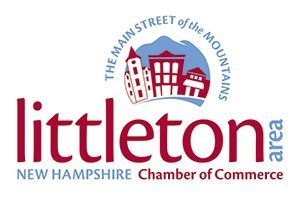
But the Halls Lake Association, which oversees the health of the popular fishing, swimming, boating, and birding jewel, began its efforts to clear away the milfoil back in 1991. They have been fighting this invasive weed ever since.
They may never be able to eradicate the milfoil, but each year that they have been fighting to rid the lake of the weed, they have been able to keep its bloom under control.
Eurasian watermilfoil, like other invasive species, forms a canopy that robs sunlight, slowing the growth of native water plants and potentially leading to their elimination. In the shallow waters of some ponds and lakes, milfoil can grow from one shore to the other, covering the entire pond surface and bottom, forming a dense, impenetrable mass with no open water.
This type of growth has a significant economic impact and can lead to reduced property values and increased treatment costs.
The Hall's Lake Association has been busy over the years protecting this popular 85-acre lake that also includes a boat launch area and beach on the north end of the lake. According to "Birding Hotspots in Vermont," Hall's Lake is a designated site for the Annual Survey of Vermont Loon Watch. They note that the lake's proximity to the White Mountain National Forest enhances its ecological value and recreational appeal.
To find out the enormity of this situation and get important background on their Eurasian watermilfoil program, I contacted Halls Lake Association Secretary Polly Rouhan to find out what incredible work the Hall's Lake folks have been doing to reduce the weed's toll on the lake's water life.
There are 60 homes on Halls Lake, and most homeowners are members of the Halls Lake Association. Of the 47 different plant species growing in or at Halls Lake, she told me that "At this time, Eurasian watermilfoil is the only invasive plant at Halls Lake. In 2008, Variable-leaved watermilfoil was discovered and successfully eradicated in 2010 through the dedicated efforts of the Vermont Department of Environmental Conservation (DEC). To date, it has not reappeared. Several members of Halls Lake Association are trained by DEC as Vermont Invasive Patrollers (VIPs) and continue to monitor the lake for the presence of new invasives.
I asked her about the presence of a washing station at the lake and whether milfoil information is being distributed to boaters. "We do not have a wash station currently," she wrote. "We are working with Vermont Fish &Wildlife to improve the signage at the boat launch to advise boaters about milfoil and other topics pertinent to lake stewardship."
I asked Polly if the milfoil has spread throughout the lake or if some of it has been eradicated. She told me that "Milfoil easily spreads due to its ability to establish new plants from small fragments, so it could easily populate the lake's entire littoral zone (a depth of up to 20 feet where the sunlight can penetrate). Continued removal each year by Diver Assisted Suction Harvesting (DASH) is necessary to keep the infestation from getting out of control. Sadly, a large patch of milfoil did not get harvested for two years running. The extended growing seasons both years caused this patch to proliferate greatly. This year, we were able to contract the divers for a longer period of time early on in the season and direct their harvesting to this area, resulting in the banner harvest. We hope that the harvest next year will be significantly less. Eradication is unlikely."
I told her that it appears the Halls Lake Association spends a lot of time and money addressing the milfoil problem and asked if residents around the lake assist the association in this effort to control milfoil and its causes. She told me, es, in addition to their financial contributions through dues and donations, residents help by harvesting milfoil plants growing near their docks, collecting floating milfoil fragments or those that wash on shore, and reporting the locations of emerging milfoil beds so that they may be harvested by the professional dive team before they become established. Everyone boating on the lake should refrain from traveling through infested areas and should utilize the Clean, Drain, Dry prevention method to remove all plant fragments from their boating equipment."
According to a recent informative Halls Lake Association press release, "The vast increase in the harvest is a result of heightened efforts by Halls Lake Association to effectively manage the infestation. Backed by funding from the Vermont Department of Environmental Conservation (DEC) Aquatic Nuisance Control (ANC) Grant-In-Aid program, the Town of Newbury, and generous donations from its membership, HLA was able to increase its spending on milfoil removal from $11,000 in 2024 to $27,000 in 2025."
The press release continued, noting that the professional dive team of Swampguana, headed by Rob Patton of Barton, Vermont, was able to make that money go even farther by working more effectively on the lake this season. Using Diver Assisted Suction Harvesting (DASH), the team selectively removed invasive plants from the lakebed by their roots, minimizing the impact on surrounding native species. Having worked last year at Halls, the divers were more familiar with the distribution of the milfoil growth and were able to attack the thicker beds, resulting in a greater harvest.
While complete eradication of invasive milfoil is unlikely, efforts to slow its spread will continue so as to keep the waters of Halls Lake healthy for wildlife habitat and recreation. L ake visitors are urged to adopt the DEC's Clean, Drain, Dry initiative to make sure invasive plants and animals are not carried from one infected waterbody to another.
More information about Halls Lake Association is available on their website at!llsLakeAssociation.weebly.com.
Have a story?
Let's hear it!
(802) 757-2773
(603) 787-2444
news@thebridgeweekly.com




